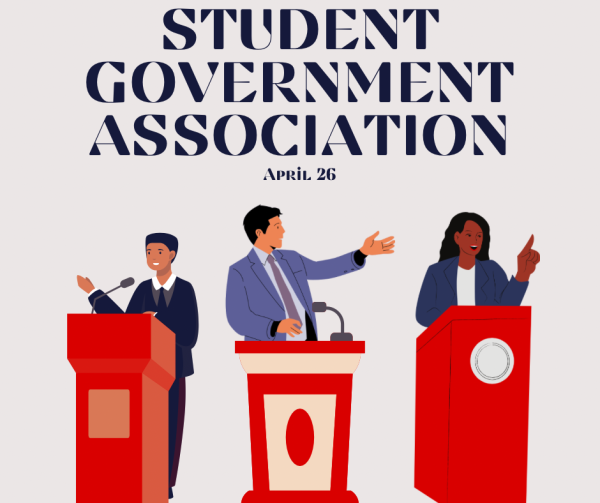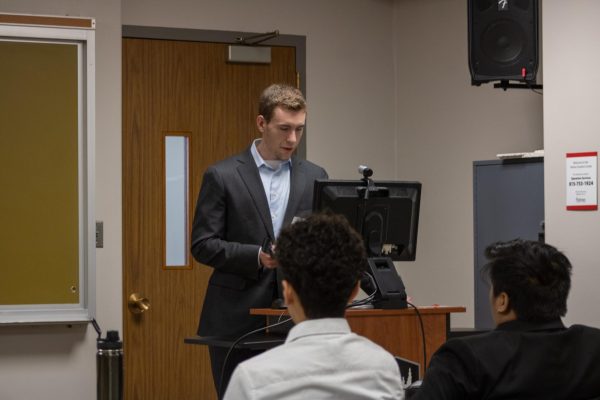Grant provides floor for hearing impaired
February 21, 2005
The fourth floor of Grant South’s B Tower is relatively quiet. The decorations on doors and walls resemble other residence hall floors – flyers fare posted, pictures of celebrities and cartoons cover doors. Except on this floor, the residents speak with their hands – this is the deaf interest floor.
Residents of the deaf interest floor are a mix of hearing, hard of hearing and deaf individuals.
“I am hard of hearing, or as my friends call me, ‘fake deaf,’ because I…just now am getting to know deaf culture,” said freshman sociology major Ashley Brockway. “I was born hearing around 18 months, then I became really sick and lost some of my hearing.”
Persons who are hard of hearing can generally hear in quieter settings but have more difficulty when background noises are present.
When there are crowds in the dining hall, it’s hard to have conversations with friends who don’t sign, Brockway said.
Freshman psychology major Rebecca Janssen was born profoundly deaf. Profound deafness is extreme hearing impairment bordering on total deafness. Janssen’s parents suspected she had a hearing problem around the age of one.
Upon doctor confirmation, Janssen’s parents and brother signed up for sign language classes, and she learned to sign as well.
Sign language is an important way for hearing impaired individuals to communicate with non-hearing impaired individuals.
Freshman elementary education major Amanda Calvert has no hearing impairment but lives on the deaf interest floor. She said communication has not been too difficult because most of the students on the floor can read lips.
Calvert said she learned many signs from freshman accounting major Adam Wasilewski. Wasilewski was born deaf but raised in a hearing family.
“I am very proud to be deaf, and I like that it gives me so much of a challenge to communicate with people,” Wasilewski said.
Hearing impairments are often nicknamed “the invisible disability” because unless hearing individuals see hearing aids or see two people using sign language, they cannot tell a person cannot hear.
“It’s not very easy to be hard of hearing or deaf. There is always something challenging about each day,” Wasilewski said. “The most challenging part is going through classes with an interpreter.”
Deaf and hearing impaired students use interpreters to help them understand what is going on in class and communicate with others.
Persons who are hearing impaired want the hearing to know to not be afraid to communicate.
“We don’t bite – at least, not anyone I’ve ever met,” Brockway said













